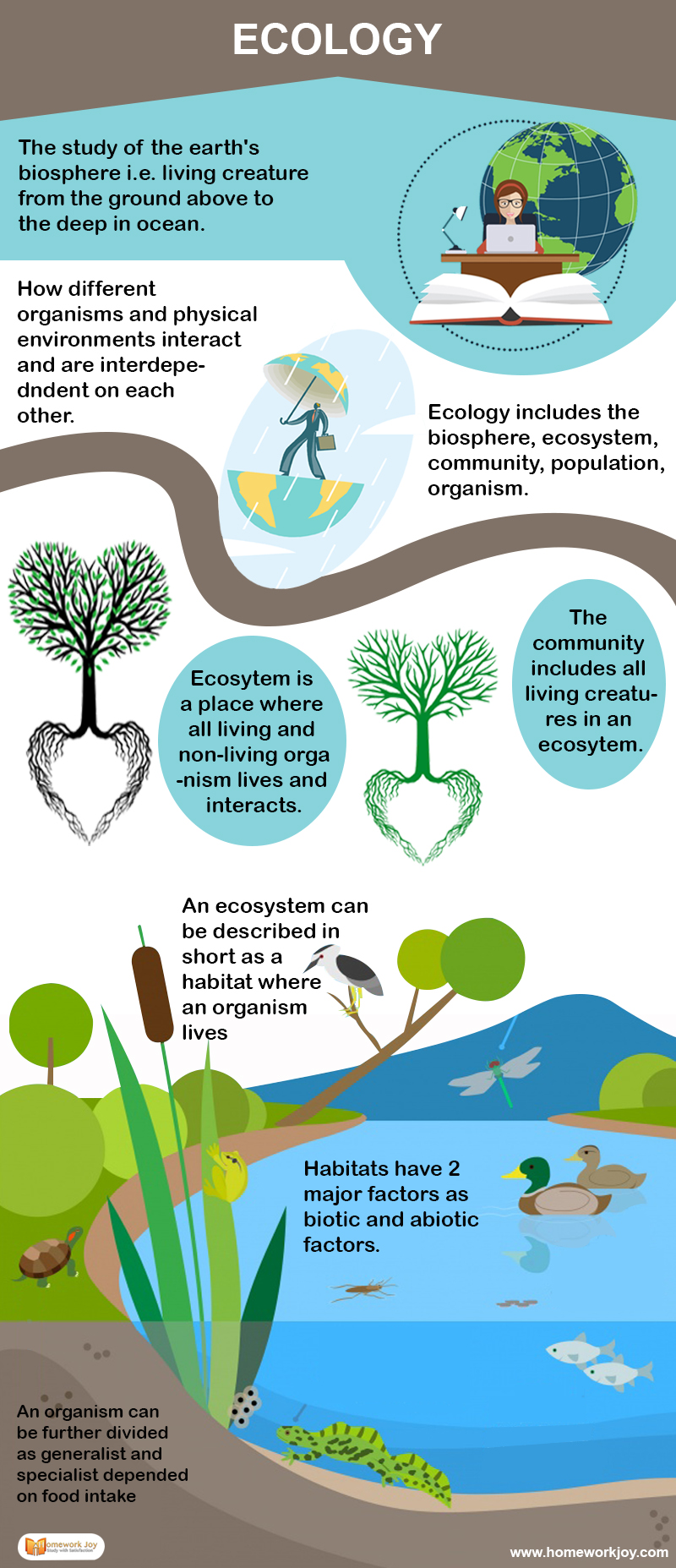Ecology is the biological study of communications among living beings and their biophysical conditions. It incorporates both biotic and abiotic segments. Biotic segments are living organisms, and abiotic is non-living or physical factors. Topics of interest include the biodiversity, dissemination, biomass, and populaces of living beings. However, ecology is the participation and rivalry inside and between species. Ecosystems are cooperating frameworks of life forms. They make up networks and the non-living segments of their environment.
Ecology at Various Levels
The ecosystem is the study of organisms on Earth, population, community, ecosystem, and biosphere. Let us look at each level.
Biosphere
Ecology is the study of the earth’s biosphere, i.e., living creatures living in the ground and also those living in the deep ocean. The main goal of ecology is to understand the distribution and a large number of living organisms in the physical environment. To achieve this goal, it requires scientific disciplines such as biochemistry, physiology, biodiversity, and evolution. The biosphere is planet Earth as a whole ecological system.
Organisms
Ecology is the study of how different organisms with physical environments and are interdependent. A body or a plant further divides as generalist and specialist depended on food intake. “Ecology is the scientific study of interactions that determine the distribution and abundance of organisms.” -defined by C.J. Krebs.
Ecosystem
An ecosystem is a place where all living and non-living organism lives and interacts. An ecosystem consists of all the microorganisms in a particular area or community. An ecosystem described as a habitat where a body lives. Ecologists of the ecosystem focus on the flow of energy and the recycling of nutrients.
Community
In ecology, the community is the group of different species occupying the same geographical area. Community ecology aims to study the structure of animals and plants. It includes all living creatures in an ecosystem. Habitats have two significant factors as biotic and abiotic factors. Abiotic factors influence that community. Species compete with each other for various finite resources.
Population
Population ecology is the branch of ecology that studies the dynamics of populations. A population is the group of organisms that share the same geographical area at the same time. The boundaries of local communities are more difficult to determine as some species dispersed over vast expenses. Population ecology is essential in conservation biology.
If you need more assignment help, contact us anytime. Our professionals are 24*7 available to assist you.
